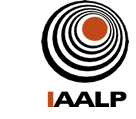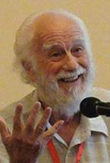
Prof. Dr.
Georgi Lozanov

Prof. Donald
Schuster
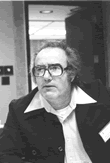
Charles Gritton
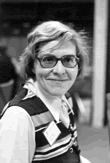
Dr. Jane Bancroft
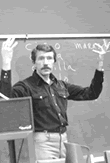
Prof. Charles
Schmid
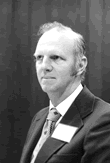
Dr. Charles Conolly
Accelerated Learning is a model of teaching and learning that creates an environment and teaching processes to enable learners to move beyond limiting beliefs and misconceptions and tap into their hidden potential. To understand Accelerated Learning at its core and what distinguishes it from many other teaching philosophies and methodologies, it is important to both go back to the roots of the method and look at its development over the years.
Suggestopedia, originally developed by Dr. Georgi Lozanov, a Bulgarian professor and psychotherapist, set the groundwork for what became known as Accelerated Learning in the USA in 1976. His Suggestology Research Institute was established in Sofia, Bulgaria in 1966. Lozanov developed a model of teaching in which learning becomes a pleasurable, natural process through the use of music, art, role-playing and games. He placed great emphasis on the quality of the learning environment. He stressed that it was the teacher who created and maintained the learning space, an emotionally safe and rich environment that motivates learners to stretch and to widen their perspectives as they develop their capacity to learn. The physical environment invites learners to engage with one another, with the materials and content, and with the facilitator in a joint learning journey. The design of the learning activities facilitates the possibility significant emotional experiences for the learners that will impact their views of the possible and of their own abilities.
Dr. Lozanov developed his method out of concern, not only for the need for education to accelerate learning in order to keep up with rapid technological advancement, but for the mental, physical and spiritual health of the learner. He believes that his system not only allows a child to go through school without trauma and stress, retaining the natural thirst for learning that is our birthright, but also enables him/her to uncover innate but hidden capacity and talent which Lozanov calls the reserve capacities of the mind.
Why did Lozanov call his method Suggestopedia?
The name Suggestopedia derives from two words – “suggestion” and “pedagogy”. The method’s main concern is the influence of suggestion in teaching/facilitating – that is to say: What does what we as facilitators do suggest to the learner? That learning is easy and fun, or, that what we are teaching is so difficult that they will never master the subject. What are the suggestions that people bring into the learning environment with them about what is possible and how can facilitators help them move beyond their limiting beliefs and reinforce the positive?
From Suggestopedia to Accelerated Learning
In the USA, the name of Suggestopedia was changed to Accelerated Learning at the time that SALT, the Society of Accelerative Learning Techniques, was changed to its current name of IAL, International Alliance for Learning. The name change reflected a cultural preference and a desire to demonstrate the adaptations over the years of the original methodology developed by Lozanov. Discoveries in the field of Neuroscience and the availability of information on research in Learning Styles, Multiple Intelligences, Adult Learning Theories, and Psychology offered much food for thought and possibilities to enrich the teaching/learning process. Various teaching approaches were assimilated over the years into what we now call Accelerated Learning.
Accelerated Learning distinguishes itself from other methodologies at its core. An understanding of the phenomena of suggestive influences we are all exposed to in our lives and the search for better and better ways to enable people to move beyond the limits of their own reduced view of their possibilities remains at the core of Accelerated Learning. The importance of the role of the teacher/facilitator as the key to the learning process leads to an emphasis on the development of the emotional intelligence, social competence, and the observation skills of the AL practitioner. Because facilitators influence more than anything else in the way they see the learner, it is important that they are attuned to considering what inner processes could be shaping their attitudes towards teaching and learning as well as the students’ responses. Awareness of the psychological receptivity of the students and their needs, motivation, interests and expectations need to be considered so that the environment may provide for these psychological factors.
Accelerated Learning offers a structure and template to design learning programs and facilitate in a way that ensures each learner’s success. At the same time, it remains an open system willing to adapt and transform itself as we learn more about learning and personal development.
The AL process has been enriched by what we have learned from neuroscience, learning styles theories, research into the multiple intelligences, cognitive psychology, constructivism, and many diverse approaches to learning and human development such as NLP, Neurolinguistic Programming, Gestalt and its Confluent Education, experiential education, holistic education theory and practice, Applied Improvisation and Drama in Education approaches to name a few. The diversity of learning activities and methods used are brought together in a structure common to all AL programs – the Accelerated Learning cycle and even it remains an open system changing as we continue a dialogue about the best way to structure learning to create better possibilities for learners to thrive and grow.
IAL’s description of the ten elements shows some of the thinking that influences what you will find in the Accelerated Learning model today. At the core of the work, you will always find an interaction rich, emotionally stimulating and safe learning environment. The learning activities reflect what we know about learning and development, and involve the learner in discovery, playful experimentation, cooperative learning, and the creation of new opportunities and perspectives. Each learning program offers a smorgasbord of possibilities to appeal to all learning styles, to invite learners to stretch and to grow. As the key success factor, you will find a facilitator who orchestrates the learning and creates and maintains a learning space in which each person thrives, learning is meaningful and joyful, and each person is transformed as a result of what happens in the learning environment. As our knowledge about and understanding of the learning process grows, Accelerated Learning will adapt and refine the process of teaching/facilitating to continue to help create a world in which we are all successful life-long learners and learning is more than the exchange of knowledge, it is a process in which each person thrives, is transformed and becomes in some way more whole and able to create and live the lives we want and deserve.
